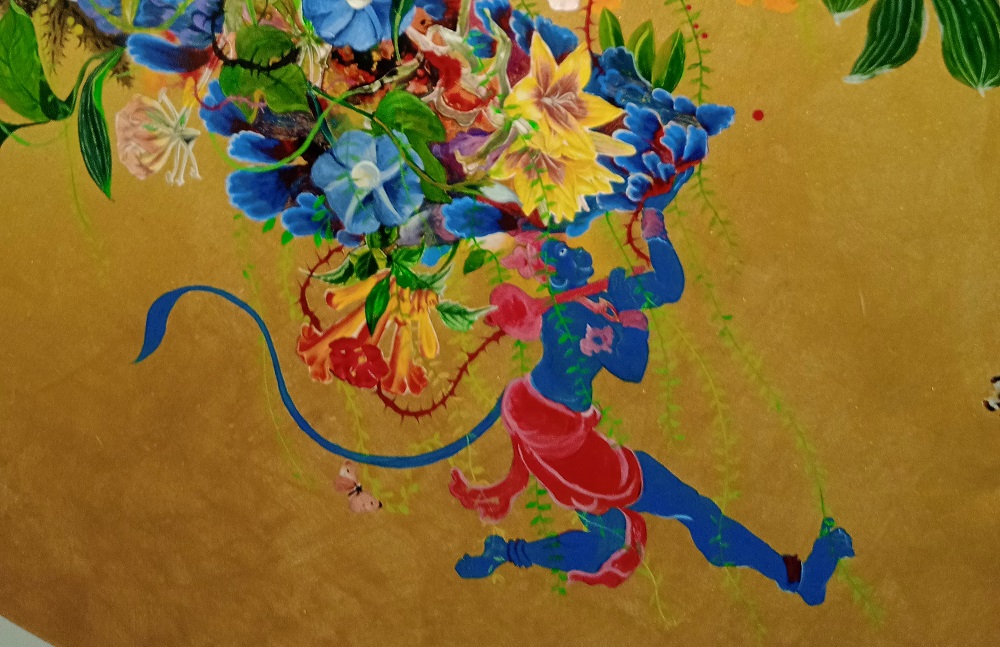In the Indian context, Hanuman has been a hot topic for many decades, yet there has been controversy because of the myth used to attack non-Hindu. Hanuman Chalisa is a political tool in India under the Modi rule, and many ‘attacks’ news appeared from different parts of the country in the name of Hanuman.
In the Indian epic, Ramayana brings the mythical character of Hanuman to the Indian dream with Rama, Sita, and Laxmana. Hanuman is renowned for his passionate devotion to Rama and is one of the Chiranjeevi in the epic. In the epic Ramayana, many stories are linked with Hanuman, mainly searching for Rama’s kidnapped wife, Sita. Hanuman joined other monkeys and searched for Sita in the southernmost tip of India and then to Sri Lanka. For going to Sri Lanka, Hanuman used his supernatural power, transformed into a mountain, and saw Sita in Ravana’s garden, guarded by demon warriors.
The story of Hanuman always inspired Indian devotees significantly; after Modi’s regime started, Hanuman became a tool for pointing people. This is a matter of political stunt. But what do you feel when you see a painting depicting Hanuman as a central figure? If the artist is from India, then we quickly conclude. However, the artist from Sri Lanka brings the character of Hanuman as a significant figure in the paintings, which invites the viewers’ connotations. Priyantha Udagedara, a Sri Lankan artist and art historian, displays his works in Delhi Contemporary Art Week and shows the ‘Hanuman’ element as a central figure.
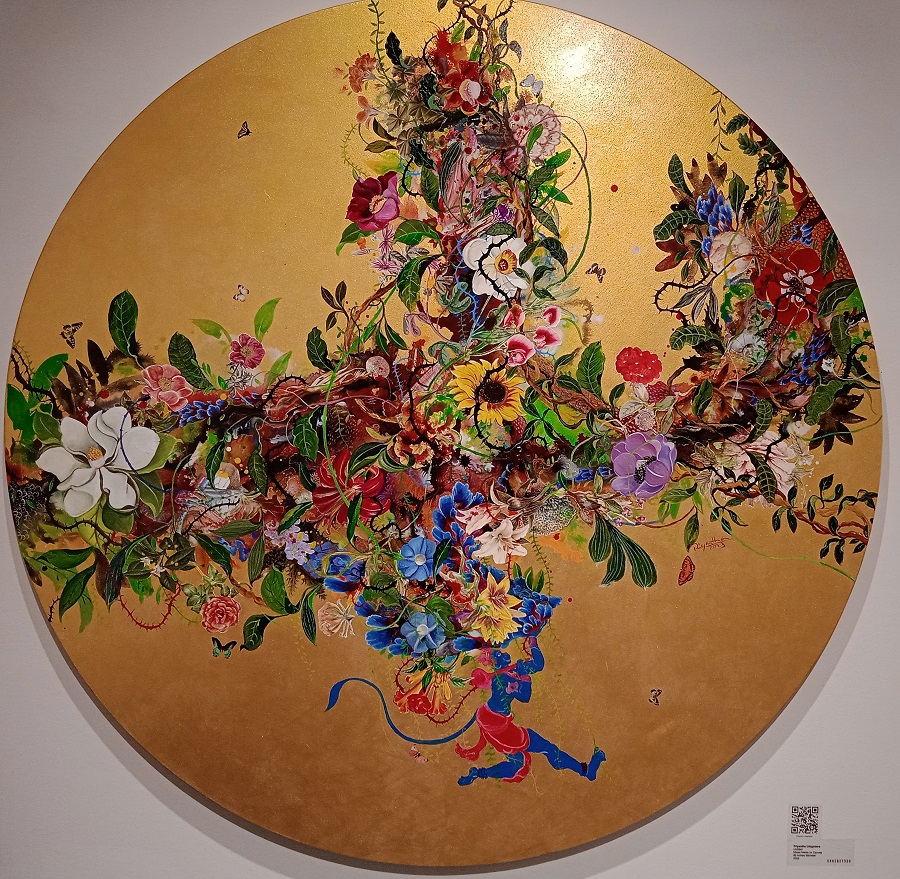
In a mythical story, Hanuman burns Sri Lanka to rescue Sita from Ravana and plays a central role in Rama’s victory in the war against the Ravana. How can Hanuman become a visual metaphor for Sri Lankan artists? According to Priyantha, ‘art is a new form of landscape that exemplifies terror and beauty in one place. The viewer takes in a false sense of beauty before the revelation of the displaced feeling of unbearable beauty. Art deals with the day-to-day life where the crisis has penetrated the norm and disrupts the perceptions of an idyllic place as portrayed in tourist brochures and promotional material.”
In this painting, Priyantha brings a Hanuman feature by carrying Sanjivani, a medicinal herb, a mythical story portrayed in Ramayana when Ravana’s son, Indrajit, hurls a powerful weapon at Lakshmana. In Hindu text, Jambavan, a King of bears, instructs Hanuman to fetch the Sanjivani herb from Mount Meru. Hanuman lifts the mountain because he cannot identify the herb and carries it to the unconscious Lakshamana. This story is fascinating and expresses the power and loyalty of Hanuman. Priyantha’s displayed works portray the Hanuman carrying a bunch of medicinal plants with flowers and butterflies.
Mount Meru is a sacred five-peak mountain mentioned in Hindu, Jain, and Buddhist cosmology, and there is no clear identification of the physical geographical location of this mountain. Hanuman was called upon to fetch Sanjeevani herb from Mount Dunagiri in the Himalayas or Valley of Flowers. The significance of this medicine is believed to revive a dead person; the herbs constantly ’emit light’, as Lankan Royal Physician Sueshena mentioned when Hanuman saluted his feet for the rebirth of Laxmana.
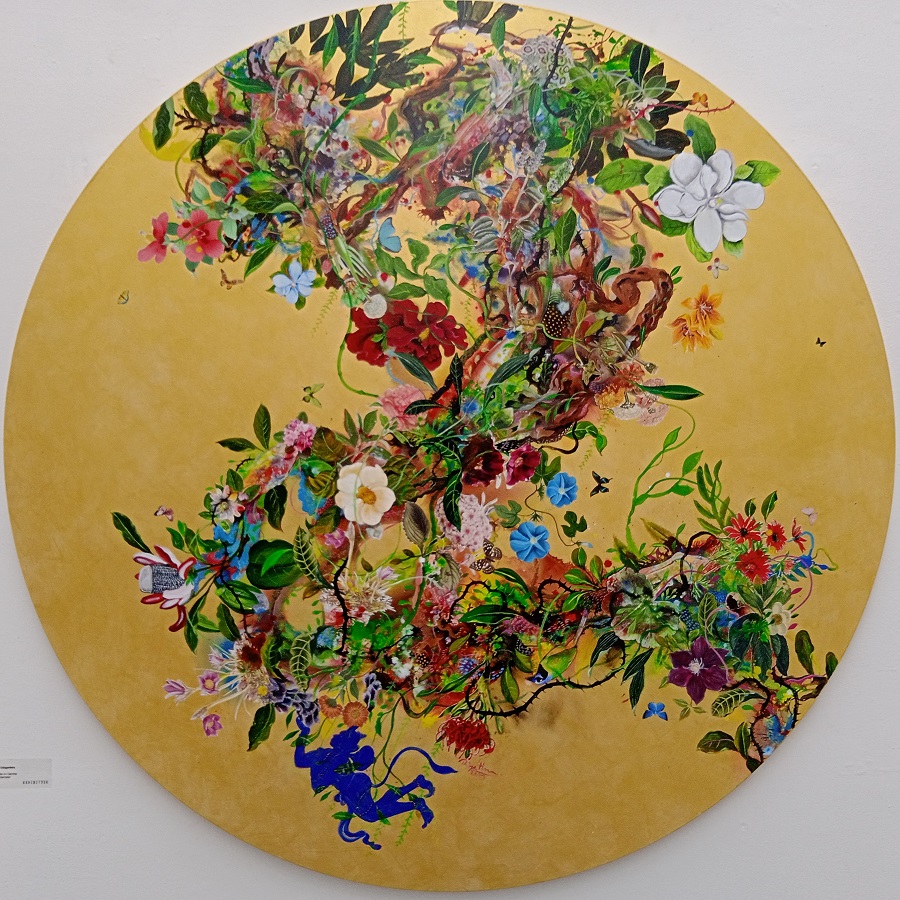
The artists exotically bring the beauty of magical medicinal plants and flowers that give us life from death. There are no links or artistic notes with the paintings to understand more about the artwork and why the artists bring Hanuman into his paintings. In a mixed medium canvas, Priayntha tells the story of the magical power of herbs and flowers amidst horrors and absurdities of political manipulation in the name of Hanuman and mythical stories. Look into the paintings which bring the Sanjivani, a medicinal mountain fetched by Hanuman, which brings life from the death of ‘communal violence or riot, or even a mass killing.
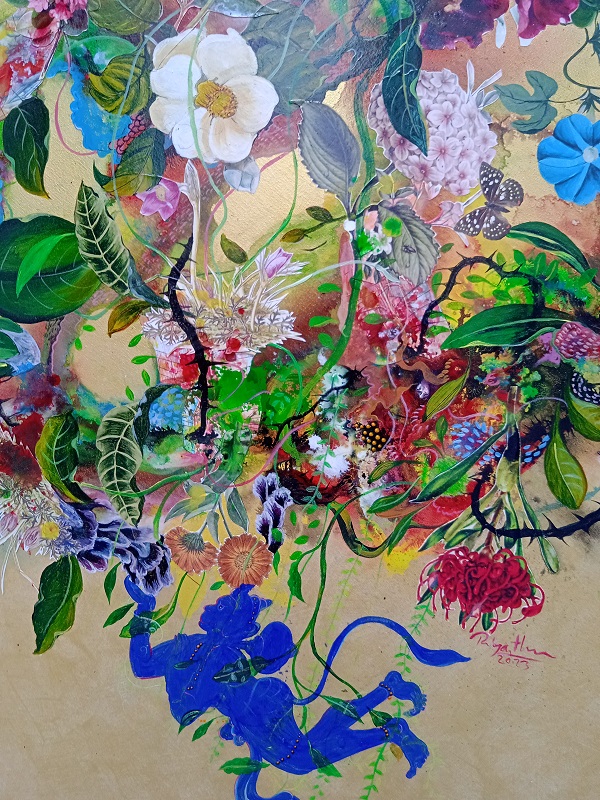
The artwork is magical herbs for one who is open to healing. Art can heal the wounds created by propaganda or political insurgencies. If Hanuman is a symbol or a political tool for ‘Killing’ someone, then it is also a medicine for someone to bring back to life. Anything can be medicine in art and practice in art. The medicinal beauty and harmony of these flowers and plants would help reach a fictitious character’s mythical mountains.
These days, we go to lockup if anyone says Hanuman is a mythical character. But, politicians may not understand the politics of Priyantha’s paintings. Why the artist used Hanuman to bring magical medicine to dead people is a fascinating question. Who needs those magical herbs to come back to life from death?
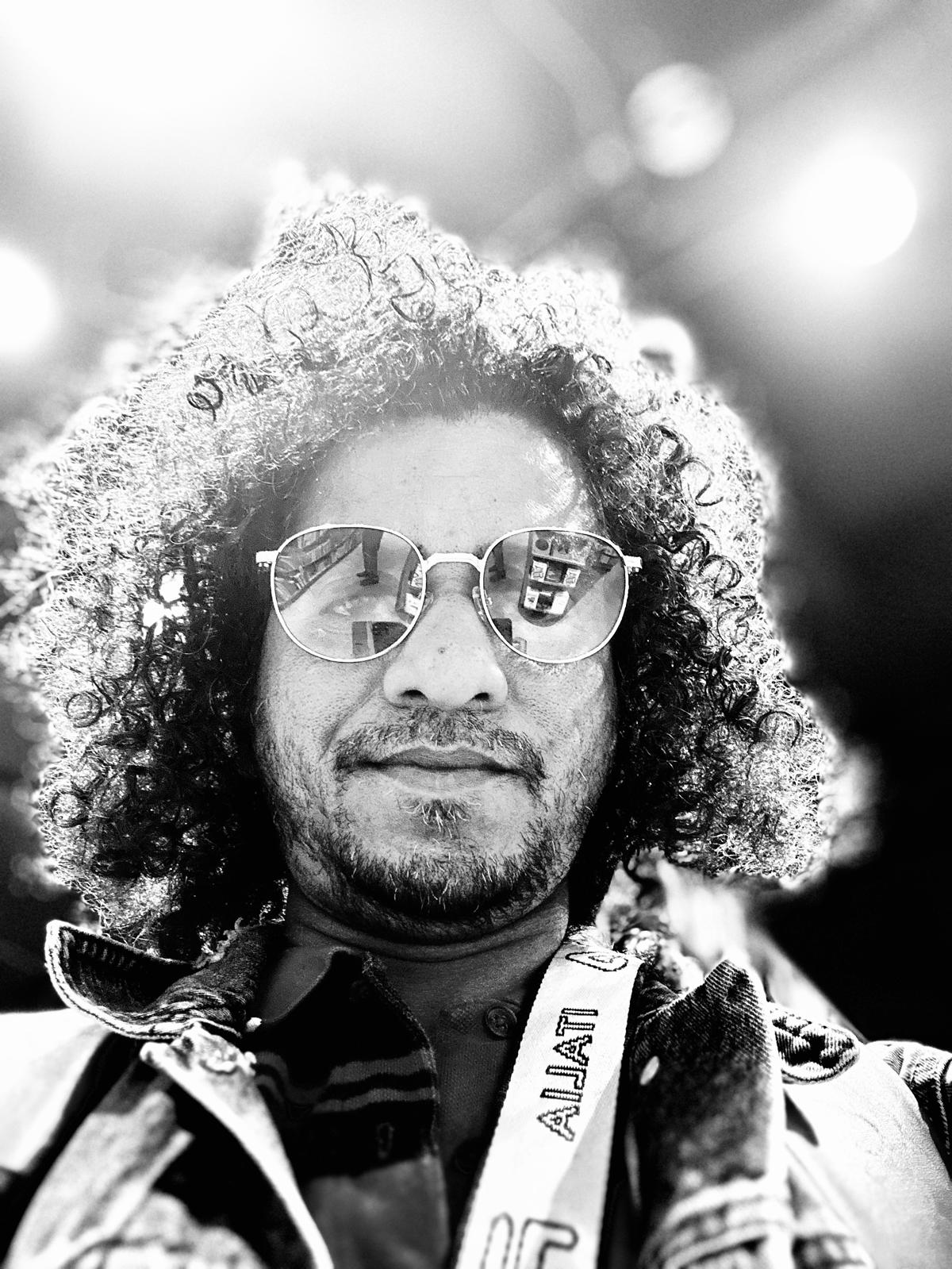
Krispin Joseph PX, a poet and journalist, completed an MFA in art history and visual studies at the University of Hyderabad and an MA in sociology and cultural anthropology from the Central European University, Vienna.

